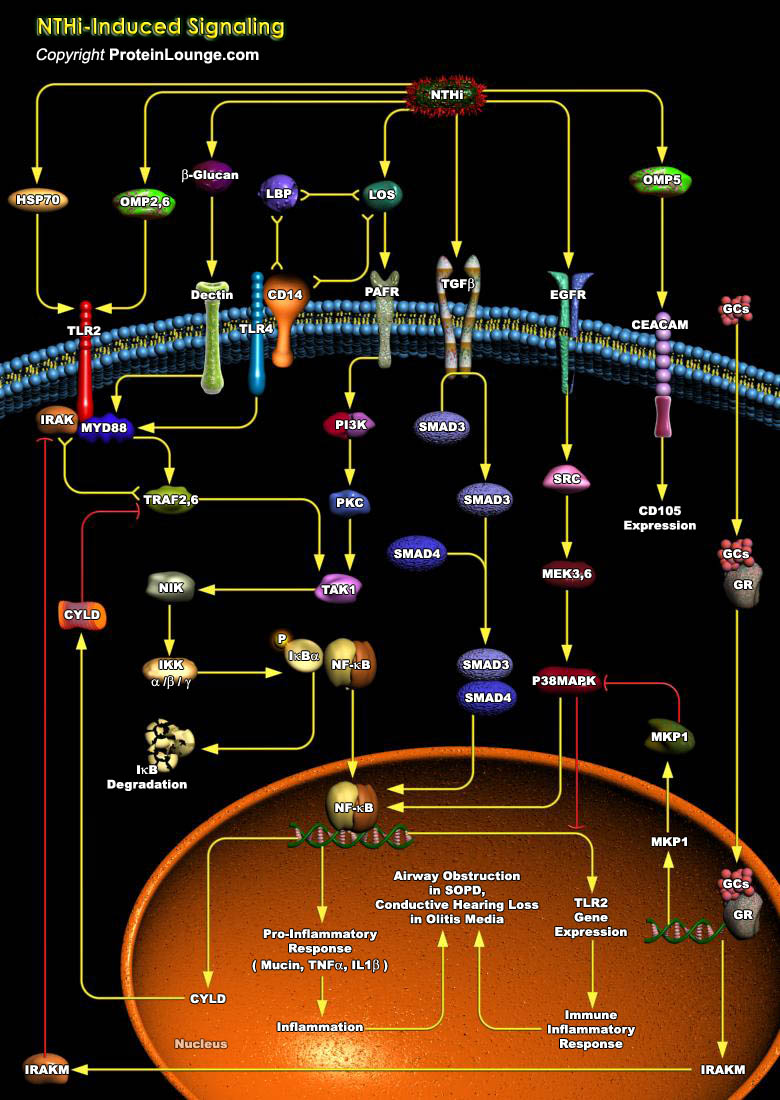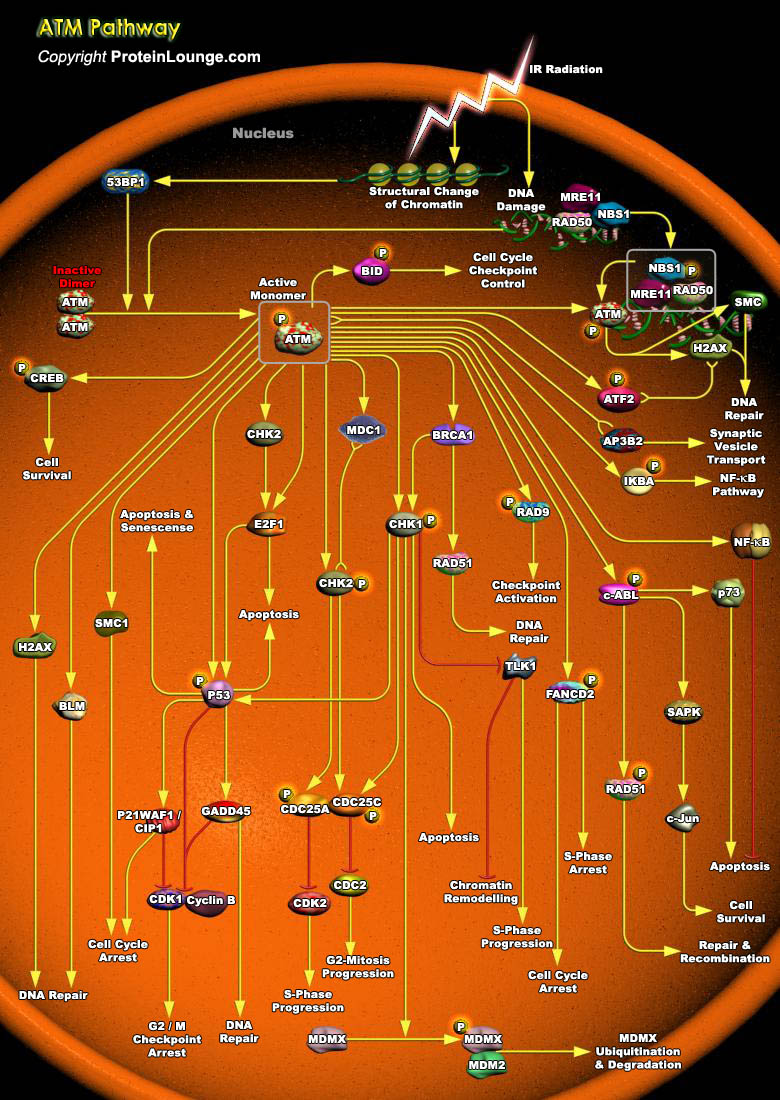Featured Pathways

The MAPK (Mitogen-Activated Protein Kinase) cascades play a pivotal role in many aspects of cellular functions, and are evolutionarily conserved from yeast to mammals. In Saccharomyces. cerevisiae, there are five MAP kinase signal transduction pathways that regulate mating, filamentous growth, high osmolarity response, maintenance of cellular integrity, and ascospore formation. The[..]

CTLA4 (CD152) is a member of a class of cell surface molecules capable of terminating early events in the receptor-mediated signaling cascade. It is a 41–43 kDa,type 1 transmembrane glycoprotein of the immunoglobin superfamily having 223 amino acids in length. The extracellular architecture of CTLA4 is characterized by a single IgV-like domain containing the B7- 1 (CD80)/B7-2 (CD86)[..]

Nontypeable Haemophilus influenzae (NTHi) organisms are small Gram-negative bacteria that colonize the upper respiratory tract of humans beginning at a very early age. NTHi is also a leading cause of otitis media (OM), sinusitis, and community-acquired pneumonia, often following viral respiratory infection. A rising proportion of otitis media caused by NTHi has been[..]

The internal osmolarity of a growing yeast cell is maintained higher than the external osmolarity. The resulting osmotic gradient across the plasma membrane brings in water for cell expansion and creates turgor. Yeast cells are quite resistant to various types of stress including hypertonic stress. This adaptability can be traced to stress-activated signaling pathways that sense the stress[..]

MAPK (Mitogen-activated protein kinases) are serine-threonine protein kinases that are activated by diverse stimuli ranging from cytokines, growth factors, neurotransmitters, hormones, cellular stress, and cell adherence. MAPKs are expressed in all eukaryotic cells. The basic assembly of MAPK pathways is a three-component module conserved from yeast to humans. The MAPK module includes three[..]

Parkinson's disease is a Neurodegenerative disorder characterized by the progressive loss of Dopaminergic neurons in the substantia nigra and the appearance of intracellular inclusions, named Lewy bodies and Lewy neurites in the remaining nigral neurons. The Substantia nigra is located in the midbrain region of the brain. It consists of two parts: the SNc (pars compacta), and the SNr (pars[..]


HGF (Hepatocyte Growth Factor)/SF (Scatter Factor) is a mesenchymal- or stromal-derived multipotent heparan sulfate-binding and dermatan sulfate-binding pleiotropic polypeptide that mediates epithelial-mesenchymal interactions with mitogenic, motogenic and morphogenic activities towards many normal and neoplastic epithelial cells. Initially identified as a potent hepatotrophic factor[..]

CD28 (Antigen CD28) is characterized as a co-receptor for the TCR (T-Cell Receptor)/CD3 (CD3 Antigen) complex and is responsible for providing the co-stimulatory signal required for T-cell activation. CD28 also act as a receptor independent of the TCR and can initiate signaling events without concomitant TCR ligation. Priming of naive T-cells in lymphoid organs depends on the interaction between[..]

Cell differentiation begins only when the cell proliferation mechanism is seized, and the macrophage differentiation system is a good example, as the macrophages start to differentiate only when they stop proliferating. Molecular mechanisms which act coordinately in order to regulate cell proliferation and differentiation are vital in development. Induction of Ets (v-Ets Avian[..]


During immune response, T-cells are optimally activated in secondary lymphoid tissues in order to properly migrate into areas of inflamed tissue. Upon antigen recognition via the TCR (T-Cell Receptor)/CD3 (CD3 Antigen) complex, a second co-stimulatory signal from APCs or Antigen-Presenting Cells is necessary for activation of naive T-cells. According to the “Two-Signal Model” for T-cell[..]


















 Pathway.jpg)
